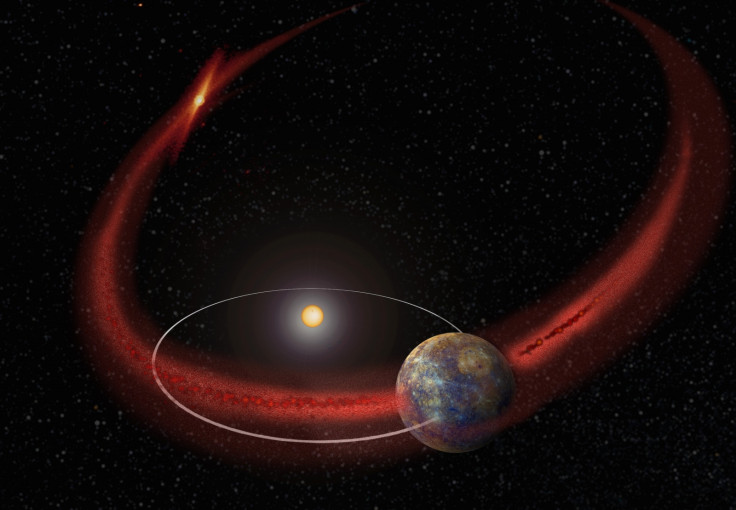Meteor showers regular on Mercury, suggests Messenger data

Mercury could be bombarded by a periodic meteor shower, most probably associated with comet Encke, according to Nasa's Messenger data.
"The possible discovery of a meteor shower at Mercury is really exciting and especially important because the plasma and dust environment around Mercury is relatively unexplored," said Rosemary Killen, a planetary scientist at Nasa's Goddard Space Flight Center in Greenbelt, Maryland, and lead author of the study, available online in Icarus
The showers were discovered by a surge in calcium in the thin halo of gases surrounding the planet.
Measurements taken by Messenger's Mercury Atmospheric and Surface Composition Spectrometer showed seasonal surges of calcium that occurred regularly over the first nine Mercury years since the probe began orbiting the planet in March 2011.
A shower of small dust particles hitting the planet knocks calcium-bearing molecules free in a process, called impact vaporisation. This continually renews the gases in Mercury's exosphere.
Interplanetary dust in the inner solar system cannot, by itself, account for the periodic spikes in calcium and suggests a periodic source of additional dust, like a cometary debris field.
By studying the few comets in orbits that would allow debris to cross Mercury's orbit, the field was narrowed to Encke.
"If our scenario is correct, Mercury is a giant dust collector," said Joseph Hahn, a planetary dynamist in the Austin, Texas, office of the Space Science Institute and coauthor of the study. "The planet is under steady siege from interplanetary dust and then regularly passes through this other dust storm, which we think is from comet Encke."
Computer simulations using the calcium spikes data did not quite tally with the Encke conclusion but the team believes this could be due to changes in the comet's orbit over time.
Comet Encke has left several debris fields in the inner solar system, giving rise on Earth to the Southern and Northern Taurids, meteor showers that peak in October and November, and the Beta Taurids in June and July.
A meteor shower occurs when a planet passes through a swath of debris shed by a comet, or sometimes an asteroid. Recent Geminids were the result of debris from an asteroid 3200 Phaethon moving on a 'rock comet' orbit.
There have been only two missions to Mercury with the first being Nasa's Mariner 10, launched in 1973 and in operation till 1975 when fuel was depleted and communications lost.
Messenger was launched in 2004 and is now orbiting the planet, returning evidences of past volcanism on the tiny planet.
With temperatures ranging between extremes of 400 deg C on the sun facing side to -170 deg C on the other, and a lack of atmosphere, Mercury with a magnetic field and a dense composition is largely a mystery.
© Copyright IBTimes 2024. All rights reserved.





